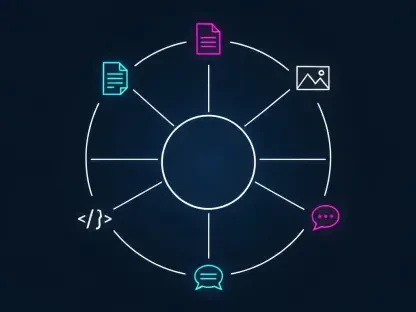As industries increasingly embrace data-driven methodologies, the demand for efficient data extraction continues to rise at an unprecedented pace. Traditionally, data teams have struggled with manual, error-prone web scraping methods. However, AI web scrapers have ushered in a new era of innovation, positioning themselves as transformative tools in the realm of data extraction and management. This review delves into AI web scrapers, emphasizing their evolution, key features, and their substantial impact across various applications.
Core Features and Technical Performance
AI web scrapers have revolutionized data extraction through their advanced functionality, notably leveraging natural language processing (NLP) and pattern recognition. NLP empowers these tools to interpret human language nuances on web pages, allowing them to extract valuable insights and data efficiently. By understanding and processing natural language, AI web scrapers can reconcile diverse datasets seamlessly, ensuring data consistency and reducing reliance on human intervention.
Pattern recognition is another cornerstone of AI web scrapers, allowing them to identify and adapt to existing and new patterns presented on dynamic web pages. This capability ensures the efficient handling of complex layouts and interactive elements, dramatically reducing the maintenance burden associated with traditional scraping methods. Furthermore, AI web scrapers are tasked with learning and adapting to changing web and data environments, ensuring continuous data flow without disruptions.
Evolution and Recent Developments
AI web scrapers have significantly evolved from earlier, more manually driven iterations. Historically, web scraping required custom scripts tailored to each site’s unique structure, often resulting in cumbersome maintenance efforts. However, modern AI tools integrate technologies like computer vision alongside NLP to emulate human-level page interpretation, thus alleviating the technical constraints of script-driven scraping. Developments in features like adaptable algorithms have allowed for minimal input from users, streamlining the data extraction process.
Recent developments also reveal a noticeable shift toward user-friendly interfaces and integration capabilities, extending the use of AI web scrapers beyond traditionally technical users to include marketing teams, financial analysts, and more. These innovations have enabled broader adoption, providing powerful data extraction solutions without the exhaustive resources traditionally required.
Applications and Real-World Impact
AI web scrapers hold immense applicability across various sectors, demonstrating their versatility and effectiveness. Businesses harness these tools for lead generation, competitor monitoring, and market research, effectively expanding their analytical capabilities. Sales teams utilize AI web scrapers for effortless lead compilation, while e-commerce entities monitor competitor prices and inventory data without delays, allowing rapid strategic responses. In real estate, AI web scrapers aggregate property listings and neighborhood insights, facilitating more informed investment decisions.
The application of AI web scrapers has introduced notable efficiencies across multiple industries, reinforcing their position as essential assets for data-driven operations.
Challenges and Limitations
Despite their advancements, AI web scrapers face several challenges, including overcoming technical and regulatory hurdles. Technical challenges can arise from continually adapting to whole-scale design overhauls of web interfaces, maintaining extraction accuracy. Furthermore, regulatory restrictions on data privacy and compliance necessitate cautious intervention to ensure the ethical use of scraped data.
Efforts are ongoing to address these challenges, with continued development in AI models aiming to improve accuracy and compliance adherence. Implementing more sophisticated artificial intelligence protocols remains a critical task in broadening the deployment landscape for AI web scrapers.
The Way Forward
The future of AI web scrapers is poised for significant growth, with anticipated advancements promising further breakthroughs. Autonomous AI agents could soon enable fully automated monitoring and reporting tasks, providing users with valuable insights as they emerge. Greater integration with business intelligence platforms could offer real-time data analytics solutions, enhancing automation and strategic decision-making.
Future developments are likely to place increased emphasis on compliance and ethical considerations, ensuring that these tools operate transparently while maximizing benefits. As AI technology continues to mature, AI web scrapers will likely become even more ingrained in data processes across industries, reshaping how businesses engage with web data.
Verdict
The emergence of AI web scrapers reshaped data management landscapes, transforming traditional processes into more efficient, autonomous, and adaptive solutions. These tools have consistently showcased their robust capabilities, demonstrating substantial potential to enhance productivity and strategic insights across sectors. While challenges in compliance and adaptation remain, AI web scrapers stand ready to catalyze further advancements in data extraction—ushering data teams into an era of transformative innovation and capability expansion.









